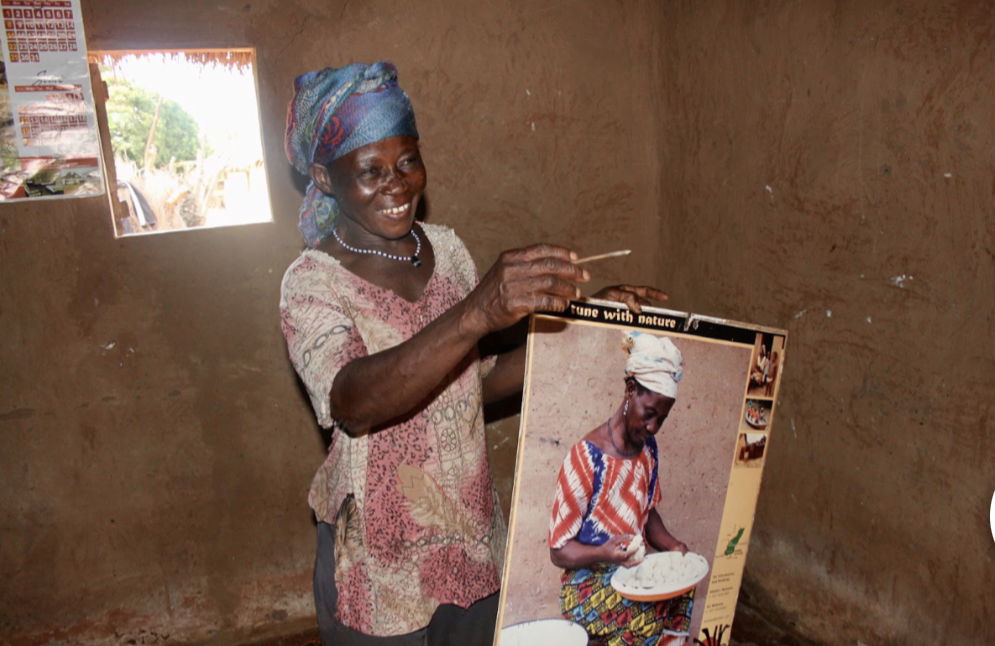Have you heard about Mognori Eco-Village?
For those of us living in Accra or other big Cities, the name Mognori might be foreign, but the village of Mognori is a vibrant community whose work with environmental conservation is of great importance to the protection of Wildlife and environment in Ghana.
Getting there is not such an easy task - first, you pass through the regional capital of the Savannah Region, Damango, before branching at the village of Larabanga, home to Ghana's oldest Mosque, painted in its iconic black and white colours and dating back to the 15th century.

You then continue your drive to the country's largest National Park, Mole, and right there, bordering the National Park, you find the village of Mognori. In the local language of Hanga, the name Mognori means ´A Community at the Bank of a River´ and the village lies next to a river running through the park. Originally home to farmers from the neighboring village looking for farmland, Mognori is today home to around 250 people. One of which is Young Reporters for the Environment Patron, Jakpa Abubakari.

In a conversation with Jakpa at his family home in Mognori, Young Reporters for the Environment got to learn more about the story of Mognori and the great work of environmental conservation being done there.

As a farmer community, the people of Mognori have been conscious to protect their environment for a long time, as it is through the land they sustain their livelihoods. However, in recent years the focus on environmental conservation is even higher in the community, partially due to the work of the Mole National Park.
Mole National Park is managed by the Wildlife Division of the Forestry Commission of Ghana with a mission to “sustainably manage the wildlife resources of Mole National Park, increase revenue, and generate economic activities around the Park with a view to contribute towards local socio-economic development.”The Park was established in the 1960´s shortly after Ghana gained independence, covering a vast 4000sq km of land in the Northern parts of Ghana. Through the park runs the rivers of Lovi and the Mole, creating a good habitat for the wildlife there. Today, Mole is home to around 90 mammalian species, including elephants, antelopes and hippopotamus. More than 700 species of plants, over 100 species of butterflies and around 300 different types of birds. Included in these numbers are also the endangered and more rare species such as the Leopard, Lion, Yellow-backed Duiker, and the Black and White Colobus Monkey. Additionally, you can also find 33 reptiles and 9 amphibian species, with crocodiles being a common sight near the Parks water bodies.


Traditionally, the primary threat to the survival of the varied species has been poaching and human encroachment. However, as the boundaries for human habitation have moved further away from the park, alongside effective law enforcement and protection of the Park through the establishment of the range system, and collaboration with fringe communities it seems as if poaching that historically came from the local communities surrounding the park has been lessened. The societal benefits of this conservation area is clear from the fact that Mole is currently inscribed on UNESCO’s Tentative List of World Heritage Properties and is working towards achieving World Heritage Site status.
It is not only the village of Mognori that lies in close proximity to The Park, Mole, in fact, shares its borders with 33 fringe communities. Along with the establishment of the Park and its mandate to protect and conserve wildlife and biological diversity in the Region, came also some restrictions for the people in the neighbouring communities as it meant they could no longer hunt bushmeat, fish in the rivers, or cultivate their farms as they used to.

Some had to relocate their farms as far as 20 km away and when animals from the park, mostly elephants and monkeys, still came to their farms, damaging their crops, tension started growing between the park and the communities. Elephant protection is one of the key goals of the Park and because Elephants migrate over long distances, sometimes through villages and adjacent farms, for that to be achieved the Park requires the help of the local communities. As such, to mitigate the burden faced by the communities, the park established Eco-Tourism activities in the surrounding villages with proceeds going to the community as compensation for the losses caused to them by the wildlife of the park. Not only do the communities conserve the environment, they also conserve many local traditions. In Mognori this means that you can now go on canoe Safaris on the river, witness traditional shea butter production, learn about historical methods of building houses, and gain insight into practices of traditional medicine.


A visit to Mognori should truly be on the to-do list of every aspiring or practicing environmentalist, or anyone with an interest in nature conservation. Not only is Mognori a great destination for getting a break from bustling city-life, but visiting Mognori Eco-Village is an opportunity to witness what great environmental conservation, such as the practices taking place in Mole National Park, can lead to. Such as a thriving ecosystem with protected bio-diversity and Socio-Economic benefits to the surrounding arrears. A visit to Mognori also enlightens you about forgotten or forgone practices of production and nature cultivation.
And If you are lucky, you might just go on a day when Jakpa is around and he can share with you the story of Mognori.